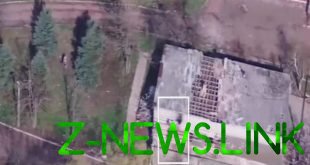 Soon can happen real boom in space development because of this achievement.
Soon can happen real boom in space development because of this achievement.
One company made a revolutionary achievement that is so unfair, few people noticed. She has successfully used a 3D printer in the extreme conditions close to space, and in an environment of almost complete vacuum printed with it, details of the polymer alloy. In the future this technology will allow us to develop and produce more large-scale spacecraft and space telescopes directly in the environment where they will work.
“This is a very important event because it means that additive technologies and the opportunities they offer, in the foreseeable future will build a structure directly in the space,” commented Andrew rush, CEO of Made in Space in an interview with Scientific American.
American company Made In Space was founded in 2010, specializiruetsya in the production of 3D printers for use in microgravity and has managed to stand out, demonstrating the capability of producing different parts in an environment with almost no gravity. In 2010 with the help of its 3D printer was created several different objects on Board the International space station, including several tools that astronauts can now create yourself, without having to wait for the next delivery of equipment and supplies within the next cargo mission.
Right now on Board the ISS is two a 3D printer, but none of them left the safe environment of the station and was not under the influence of vacuum or extreme temperature changes — a common phenomena for an open space.
To simulate the environment of a space station team of engineers Made In Space has conducted 24-day test inside a thermal vacuum chamber. In such circumstances, the printer was able to print polymer rods with a length of 85 cm. However, what is most interesting is the development of a 3D printer in space is not limited. The company has a more ambitious project.
It’s called Archinaut is to create a special “handy” space robot, capable of printing three-dimensional objects in space. In the future it may produce a real revolution in space exploration.
“We believe that robotic manufacturing in space will revolutionize how we develop, collect and use space systems,” said Steve Yurchik, head of space technology at NASA, at a press conference.
The company hopes that in the future, large structures will be assembled in space that will create much larger projects such as larger space telescopes. Now they have to develop with that in mind, so they can fit in the available volume of the carrier rocket, which sends them into orbit.
For example, the same engineers of a new space telescope named James Webb had to develop a method of tightly folded, and then put 80 individual parts of the system. Fortunately, to the rescue came the construction technique of origami, which is suitable more than ever. Webb has already cost NASA and American taxpayers $ 8.8 billion. He has high hopes. He has more 80 scientific missions. But NASA wants to build bigger space telescopes. The nearest of them should be a telescope with a mirror diameter of at least 12 meters. He’ll search for signs of life in the exoplanet atmospheres, and other equally ambitious observations.
“The mission now is simply impossible, given what we already are scrambling and trying tightly and compactly put in the startup space equipment, where it would decompose. Sending out the 12-meter telescope is simply impossible in the conditions of only one run,” said Yurchik.
“It will need to perform several runs partially assembled systems. It will be a very expensive event.”
The next step for the company Made in Space will test combinations of printers and robotic devices, and then a demonstration mission to orbit the Earth. If you’re lucky and successful, the technology for the Assembly of various structures in space we will be able to see by mid 2020-ies.
“I think such systems will become really possible,” hope said Andrew rush.
© 2017 – 2019, paradox. All rights reserved.





